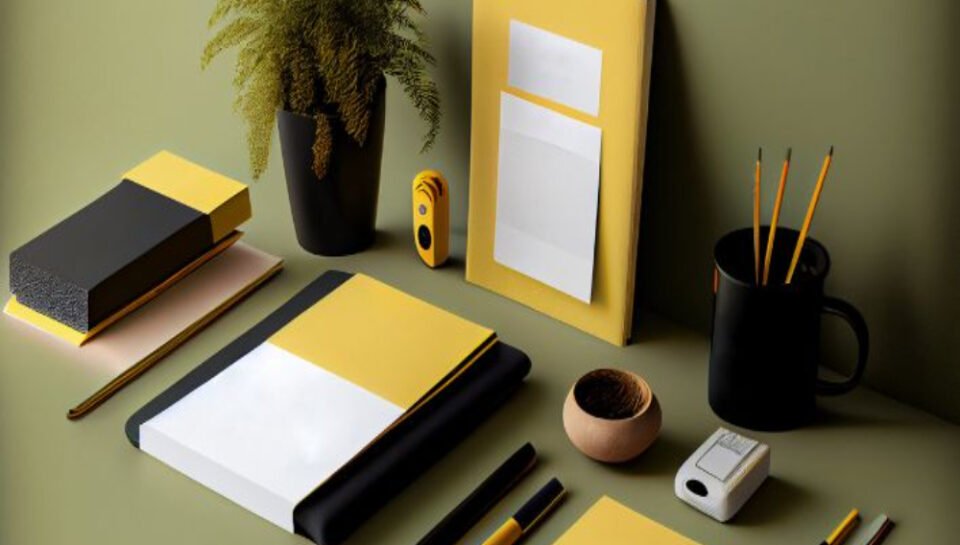
Detail the process of customizing stationery to reflect brand identity.
Introduction
Customizing stationery to reflect brand identity is a powerful way to maintain consistency, professionalism, and recognition across all business communications. From business cards and letterheads to envelopes and notepads, each piece of stationery should visually communicate a company’s values, tone, and personality. A cohesive stationery system reinforces brand trust and ensures every interaction—whether internal or external—feels unified and intentional.
Step 1: Review Brand Guidelines
Begin by thoroughly reviewing your brand’s visual identity guidelines. These include the logo, color palette, typography, graphic elements, iconography, and tone of voice. Understanding these foundational components ensures all customized stationery aligns with the overall brand image and adheres to established standards.
Step 2: Choose the Right Stationery Items
Identify which stationery elements are necessary for your organization. Typical items include business cards, letterheads, envelopes, folders, thank-you cards, notepads, and memo sheets. Select items based on how and where they will be used—for example, business cards for networking events and letterheads for official communications.
Step 3: Design Layout with Visual Consistency
Each stationery item should have a layout that maintains consistent use of brand elements. This includes standard placement of logos, margins, spacing, and alignment. For example, the logo might always appear in the top left corner, while contact information remains bottom-aligned. Uniformity across items ensures brand cohesion.
Step 4: Apply Brand Colors Thoughtfully
Use the brand color palette strategically and sparingly. Primary brand colors should appear in headers, accents, borders, or icons, while backgrounds and body areas should remain neutral for readability. Subtle use of color maintains professionalism and reinforces brand association.
Step 5: Integrate Brand Typography
Typography is a defining part of your brand voice. Apply approved brand fonts consistently for headings, body text, and footers. Maintain appropriate font sizes and styles to ensure clarity. Ensure all fonts are compatible with digital and print formats for seamless usage.
Step 6: Customize Contact Information and Roles
Tailor each item with personalized information such as employee names, titles, phone numbers, and email addresses. Templates should allow for easy customization without compromising the layout or brand structure. Ensure that each version maintains the core visual identity regardless of individual content.
Step 7: Select Quality Materials and Finishes
The tactile feel of your stationery says a lot about your brand. Choose paper stock, finishes (like matte, gloss, or textured), and printing techniques (like embossing or foil stamping) that reflect your brand personality. For example, a luxury brand may opt for thick card stock with metallic foil, while a sustainable brand might use recycled paper and soy-based inks.
Step 8: Include Supporting Brand Elements
Subtle design elements such as watermarks, background patterns, or iconography can enhance brand personality without overpowering the layout. These should be consistent with other marketing materials and used to reinforce brand storytelling and visual recognition.
Step 9: Conduct a Design Review
Before final production, review all stationery designs for consistency, accuracy, and alignment with brand identity. Involve stakeholders from branding, marketing, and leadership to ensure every detail is refined. Proofread all copy and confirm that visual elements meet print specifications.
Step 10: Distribute and Maintain Templates
Once finalized, distribute digital templates to relevant departments to maintain consistency. Provide usage guidelines to ensure that new employees, printers, and external vendors follow the correct design and customization practices. Keep templates updated as brand identity evolves.
Conclusion
Customizing stationery to reflect brand identity is not just about aesthetics—it’s about creating consistent, high-quality brand experiences. By following a thoughtful process that aligns visuals, tone, and materials with core brand elements, businesses can strengthen their presence, build trust, and communicate more effectively through every printed interaction.
Hashtags
#CustomStationery #BrandIdentity #StationeryDesign #VisualBranding #CorporateDesign #BrandConsistency #BusinessStationery #DesignProcess #TypographyDesign #PrintDesign #LetterheadDesign #EnvelopeDesign #ProfessionalBranding #DesignTemplates #OfficeBranding #BrandedMaterials #CustomPrint #BrandExperience #MarketingMaterials #DesignReview #BrandStandards #LogoIntegration #ColorConsistency #DesignForBusiness #StationerySuite





